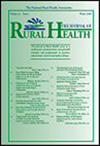Not enough: Medicaid expansion, medical debt, and cost avoidance in rural American Indian and Alaska Native households
Abstract
Purpose
Despite expanding health insurance coverage under the Patient Protection and Affordable Care Act (ACA), many Americans struggle with financial barriers to health care. Medicaid expansion was meant to help alleviate these barriers, particularly for rural communities, but has shown mixed results. The American Indian and Alaska Native (AI/AN) community, which faces both racial and geographic disparities, is a group that should benefit from Medicaid expansion. This paper examines differences in medical debt and cost avoidance for rural American Indian and Alaskan Native households in Medicaid expansion and nonexpansion states.
Methods
This study uses data from the National Financial Capability Study in binomial logistic regression models to examine whether AI/AN households in rural areas are more likely to have medical and engage in cost avoidance than their urban counterparts.
Findings
The results show no differences between Medicaid expansion status but do find a higher likelihood of medical debt for those living in rural areas. The results also show a higher likelihood of medical debt and cost avoidance for those living farther from Indian Health Services (IHS)/Tribal health care facilities.
Discussion/Conclusions
The results indicate that rural AI/AN individuals continue to face financial barriers to health care despite the expansion of Medicaid under the ACA. This suggests that rural AI/AN individuals are seeking care outside of the IHS/Tribal system due to limited access to IHS providers. Addressing these barriers may require policies and programs focusing on rural AI/AN communities.

 求助内容:
求助内容: 应助结果提醒方式:
应助结果提醒方式:


